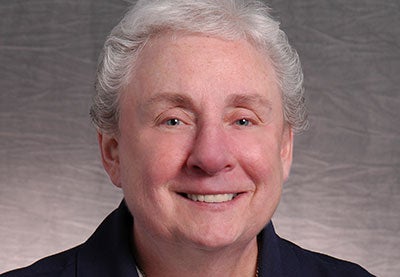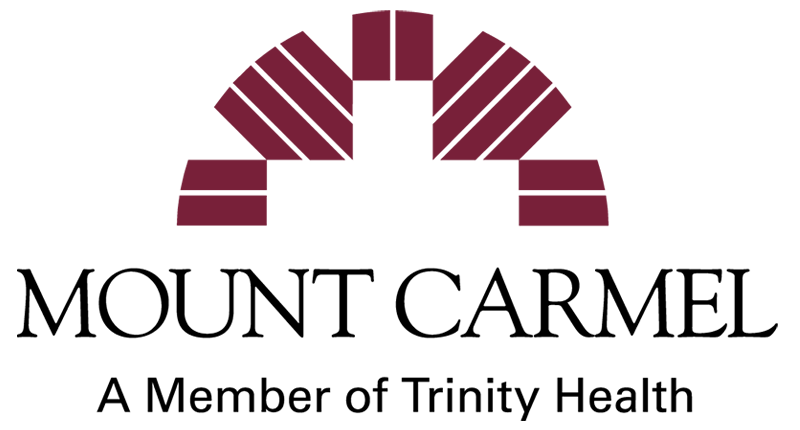A Conversation with Sister Barbara Hahl
August 31, 2023
Since Mount Carmel’s inception 130 years ago, faith, excellence and philanthropy have helped us become a model of compassionate, faith-based, high-quality, transformative healthcare in central Ohio. Today our Transforming Healthcare for YOU capital campaign is setting the course for our next century, with new treatments, new approaches and new facilities, including major projects underway at Mount Carmel East, West and Grove City. Of course, in order to appreciate our future, we need to understand our past. And Senior Vice President of Mission Services Sister Barbara Hahl is our best connection to both. She sat down with us to share the details of our beginning, our commitment to the communities we serve and our vision for the future.
Q: Sister Barbara, tell us what this statement means to you: In order to understand where you are, you must first understand where you’ve been?
A: Everyone has a history. Oftentimes, we fail to look at our history and learn. Our history determine swho we are today. We at Mount Carmel are people of faith. Our history is built around our faith. We meet those we serve where they are and understand that we are all spiritual beings. We allow our history of ministry to guide our service.
Q: Tell us about the Sisters of the Holy Cross and why they’re so important to Mount Carmel?
A: The Sisters began in France after the French Revolution. Sadly, clergy were being put to death and the need for missions and teachers was great. In 1843, Father Moreau sent four Sisters to northern Indiana to assist the Holy Cross priest and brothers who were establishing a school for boys and men — known today as Notre Dame University. The Sisters started teaching the local girls and, in 1855, moved the school — Saint Mary’s College — to where it is today in Indiana.
The onset of the Civil War created a new need, with the Sisters serving as nurses for wounded soldiers on both sides on the U.S. Navy’s first hospital ship, The Red Rover. They were the pioneers of the U.S. Navy Nurse Corps, volunteering up and down the Mississippi River.
Then in 1886, the Sisters arrived in Columbus to set up Hawkes Hospital. With no furnishings, equipment, supplies or food, the Sisters reached out to the community for donations. Within two weeks they were able to open Hawkes Hospital, even advocating with the City of Columbus to secure free water and electricity! At one point there were more than 60 Sisters operating the hospital. They embodied the mission of Mount Carmel and carried out the values of respect, compassion, excellence, social justice and caring for the underserved.
The need for quality care grew over time, and so did the Sisters’ contribution. They created the Mount Carmel School of Nursing and turned the farmland they owned east of interstate 270 into what is now Mount Carmel East.
Q: How has the vision of the Sisters remained strong over the years?
A: The vision of the Sisters was woven into everything they did. It was transferred to everyone they encountered. Their presence was evident, their values were solid and the vision of serving the underserved remains strong, even today.
Q: At one time, Mount Carmel was nicknamed the “Ark.” Why?
A: Mount Carmel was established on high ground. When the Olentangy and Scioto rivers would flood, the community families would bring their belongings and their cattle to the hospital for safety and food, the same safety found on Noah’s Ark. Since the Sisters owned the hospital and were not paid a salary, they would use the revenue from the hospital to purchase food and supplies. This was the impetus of the Sister Rose Thomas Fund, which today provides resources for colleagues in need.
Q: What is the Mount Carmel Community Service Corporation, and why was it formed?
A: Mount Carmel has always been ahead of the game when it comes to caregiving. Sister Gladys Marie came to Columbus and lent her expertise to addressing the need for specialized services. This was cutting-edge for the time. This whole idea of specialized care was new to the community. In 1984, the Mount Carmel Community Service Corporation was formed to facilitate community needs in hospice, senior and social services. These and many other services are how we continued to transform lives and our community.
Q: Mount Carmel is leading some exciting, new and innovative efforts. Can you talk about some of the activities and plans underway?
A: Since our very beginning, we have been growing and continue to develop to meet the needs of our communities. That includes the new full-service hospital we’re building in Grove City, the expansion now underway at Mount Carmel East and the redevelopment we’ll soon see at Mount Carmel West. But even as we grow, we will never abandon our deep roots in Franklinton. We will maintain a strong presence at Mount Carmel West. Expansion is necessary to continue our mission and our ministries and also continue to provide exceptional healthcare to everyone we serve. It’s also giving us a greater chance to help residents across central Ohio get the care they need and, for many, care they can’t afford. Even as we expand, though, our approach continues to be high-touch. We’re making sure that people are taken care of emotionally and spiritually, not just physically.
Q: How do you see the Foundation supporting these efforts and how important is it to have the Foundation involved?
A: The Foundation provides resources to support programs that go directly into the community, like Outreach, Pastoral Care and Church Partnerships. With the support of the Foundation, we are able to build buildings and carry on our message of faith. We serve everyone and our messages must depict our story and everything we do. Our mission must be first and foremost. This is a ministry, and we need the Foundation and donors to help us share the Gospel through our service.
Q: You recently celebrated a very significant milestone — your 60th anniversary with the Sisters of the Holy Cross. Can you share a little about your journey, how you feel, and what you’re looking forward to accomplishing now?
A: I’m fortunate to have done a lot. I have been in a hospital. I wanted to lead. I went through the ranks. I wanted to build and make things better for those who were underserved. I wanted to ensure mission work in the community or partner with those doing what we could not — rescue human trafficking victims, saving drug addicts. We are on the tip of the iceberg. I am looking forward to continuing to support what we’re doing and doing it better.
This article was originally published in the 2016 Annual Report to the Community.
